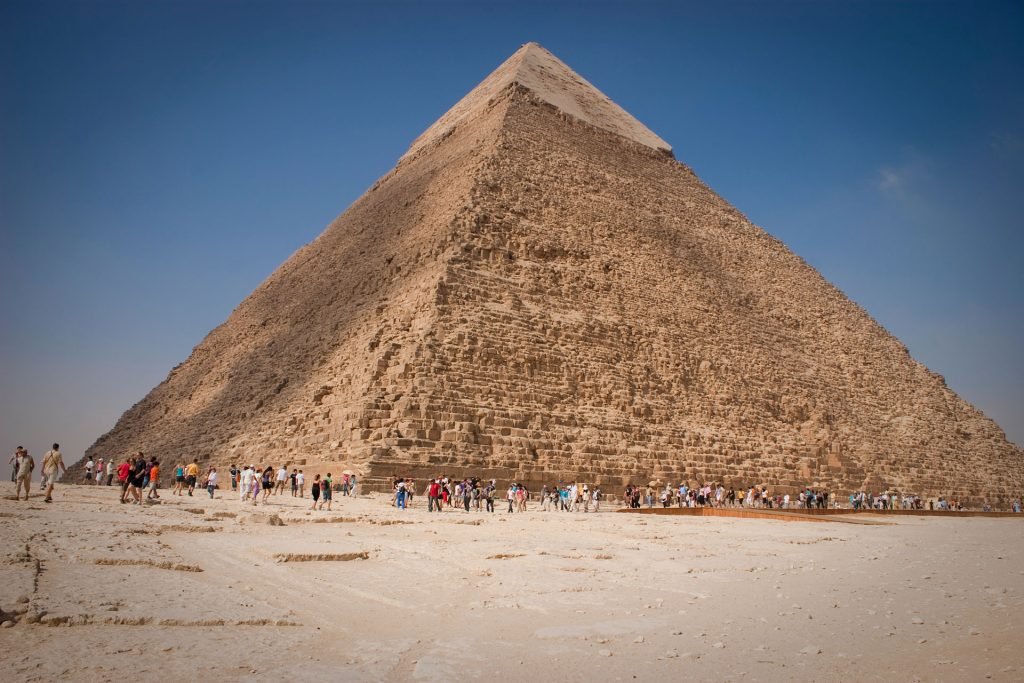Current Challenges Facing Modern Architects
(and an Ancient Egyptian comparison…)
1. Sustainable Design and the Climate Crisis : Understanding and implementing the newest strategies and technologies to create carbon-neutral or even carbon-negative buildings.
2. Urbanization and Space Limitations : Maximizing the utility of small spaces, vertical construction, and the challenges of increasing urban populations.
3. Historical Preservation vs. Modernization : Striking a balance between keeping the essence of historic buildings and integrating modern amenities and safety features.
4. Adapting to New Materials and Technologies : Staying current with the latest construction materials, methods, and technologies and understanding their best applications.
5. Building in the Digital Age : Implementing augmented reality, virtual reality, and AI in design and construction phases.
6. The Post-Pandemic Built Environment : Reimagining spaces in the wake of COVID-19, and designing with health, hygiene, and remote work in mind.
7. Affordable and Equitable Housing : Solutions to create affordable, quality housing in areas with skyrocketing real estate prices.
8. Resilient Design for Natural Disasters : Designing structures that can withstand earthquakes, floods, hurricanes, and other natural disasters.
9. Addressing Mental Health Through Design : How architecture can influence and improve mental health by focusing on light, space, and nature.
10. Bridging the Gap Between Architects and Contractors : Improving communication and understanding for smoother construction phases.
11. The Role of Public Spaces in Contemporary Cities : Designing inclusive, engaging, and multi-functional public spaces for diverse populations.
12. Zero-Waste Construction : Strategies to minimise waste during construction and ensure the efficient use of resources.
13. The Ethics of Smart Cities : Balancing the potential benefits of data-driven urban environments with concerns over privacy and surveillance.
14. Biophilic Design and Human Well-being : Incorporating natural elements into architectural designs to boost human health and mood.
15. Integrating Renewable Energy Sources in Architectural Design : The challenges and potential of designing buildings that generate their own power.
16. Balancing Aesthetics with Functionality : Ensuring that buildings are both beautiful and serve their intended purpose effectively.
17. The Evolving Nature of Workspaces : Addressing the future of work and the need for flexible, collaborative, and remote-friendly spaces.
18. Designing for an Ageing Population : Solutions for senior-friendly housing and public spaces.
19. The Role of Architecture in Social Change : How building design can foster community, encourage social interactions, and even play a part in social justice.
20. The Continuous Learning Curve of Architectural Licensing and Certification : Keeping up with changing regulations, codes, and professional requirements.
Each of these topics dives into current challenges architects face, offering potential for rich discussion, exploration, and innovation within the field.
Challenges Faced by Ancient Egyptian Architects
The early Egyptians faced numerous architectural challenges as they sought to build structures that served religious, administrative, and functional purposes.
Here’s a look at some of the primary challenges they encountered:

1. Materials : The primary building material in ancient Egypt was mudbrick. While it was abundant, it wasn’t as durable as stone. Over time, the Egyptians transitioned to using limestone, granite, and sandstone for more important and permanent structures, especially for tombs and temples. Transporting these massive stone blocks became an immense challenge.
2. Transportation and Logistics : The transport of large stone blocks and obelisks required a great deal of innovation. The Nile River was a primary route for transporting materials, but moving massive blocks from quarries to the river, and then from the riverbanks to the construction sites, necessitated intricate systems of sledges, rollers, and labor.
3. Labor : Monumental projects, like pyramids, required a large workforce. Contrary to the common myth of slaves building the pyramids, these workers were more likely well-fed laborers and skilled craftsmen who worked in rotation. Organizing such a massive workforce, ensuring their well-being, and coordinating their efforts was a significant challenge.
4. Foundations and Load-Bearing : The construction of large structures, particularly pyramids, required a deep understanding of load-bearing principles to prevent collapse. This knowledge was gained through centuries of architectural evolution.
5. Alignment and Astronomy : Many ancient Egyptian structures, especially religious ones, had to be precisely aligned with celestial bodies or cardinal directions. The Great Pyramid of Giza, for instance, is aligned with incredible precision to the cardinal points of the compass.
6. Tomb Security : Tombs, especially those of pharaohs, were filled with treasures meant to accompany the deceased into the afterlife. Ensuring the security of these treasures from tomb robbers was a major challenge. This led to the construction of complex maze-like passages, hidden chambers, and traps within some tombs.
7. Durability : Given the religious significance of many of their structures, the Egyptians aimed to make them last for eternity. This ambition necessitated robust and durable designs that could withstand the test of time and the harsh desert environment.
8. Climatic Challenges : Egypt’s hot and dry desert climate posed challenges for both the construction process and the longevity of structures. Solutions were needed to deal with issues like the drying and cracking of mudbricks or the erosion of limestone.
9. Religious and Cultural Considerations : Many architectural projects had religious significance, and as such, they had to conform to specific religious rituals, traditions, and iconographies. Changing religious beliefs, like during the reign of Akhenaten, also posed challenges to established architectural norms.
10. Expansion and Urban Planning : As the population of ancient Egypt grew and urban centers expanded, there was a need for planning and infrastructural developments, like roads, granaries, and administrative buildings.
Despite these challenges, the ancient Egyptians’ achievements in architecture remain some of the most impressive in history, with many of their structures still standing as testaments to their ingenuity and determination.






